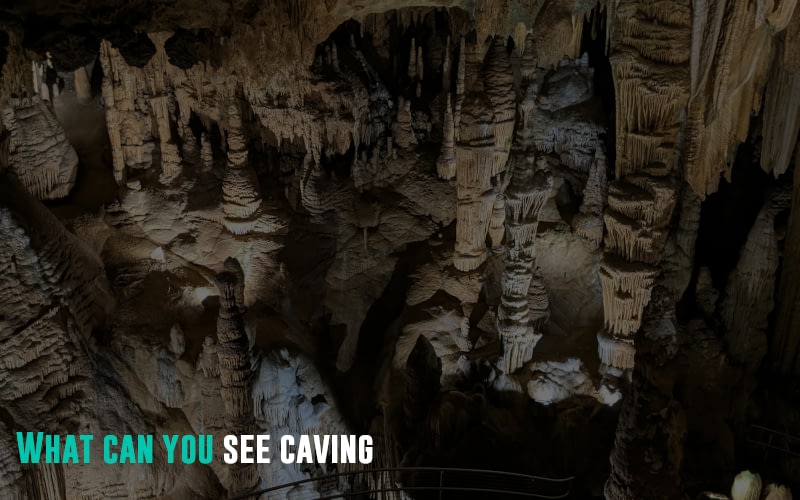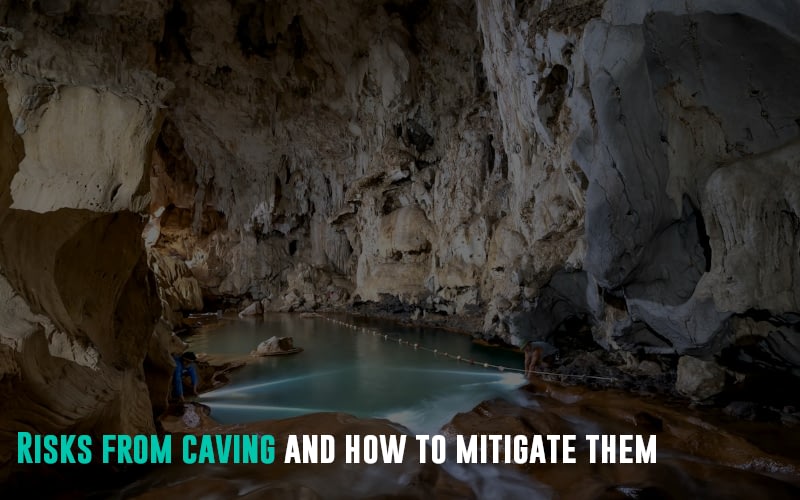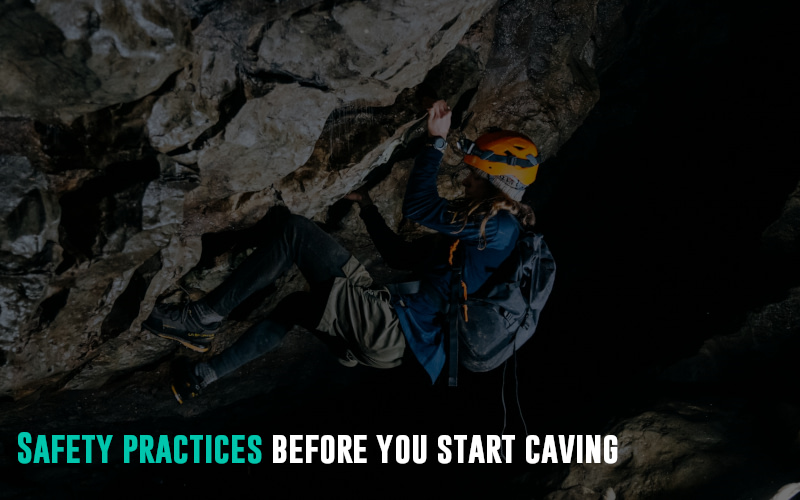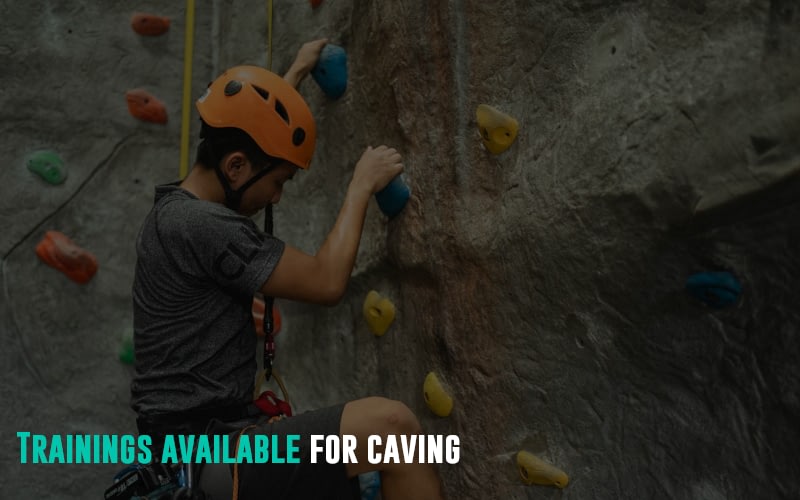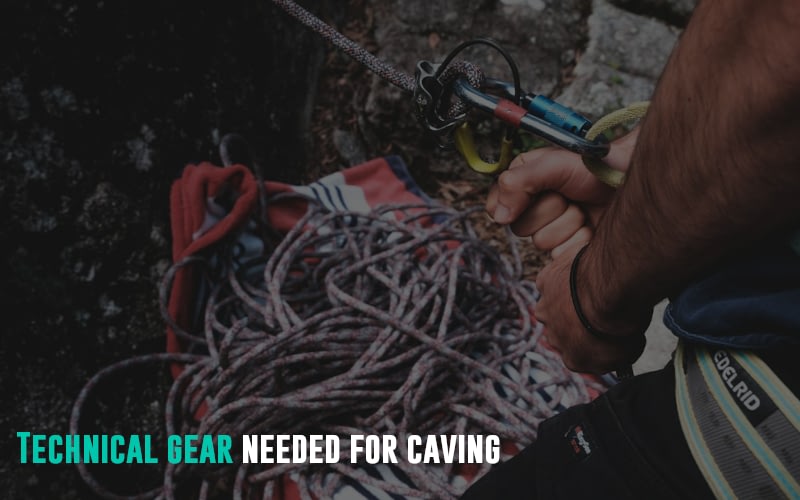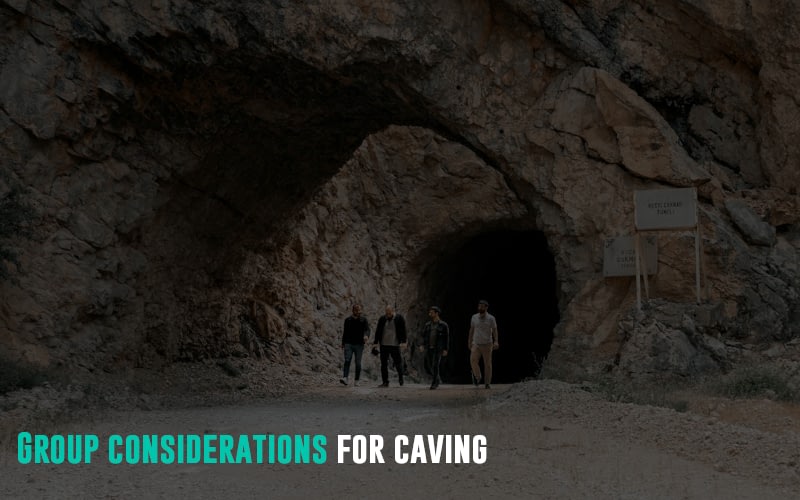How do I start cave exploring? This is the first question a traveler asks before starting their caving adventure. Caving is a recreational activity that involves exploring wild caves and looking at the underground realm. To start caving, you will need solid research, gear, and other essential items. You can start by searching for caves suitable for beginners, ideally with guided tours or well-marked paths. They ensure a safe and enjoyable experience. Next, equip yourself with the essential gear. This includes a helmet with a headlamp, proper footwear, gloves, and clothing suited for the cave’s temperature. If you have never done it before, consider enrolling in a basic caving course. It will help you understand safety protocols, navigation techniques, and ways to handle unexpected scenarios underground.
This detailed guide will tell you how to become an expert caving trip planner. Read on!
Featured Image Source
What can you see caving?
When we talk about becoming a caving trip planner, it’s important to understand the basics of this activity. So, let’s start by discussing the different things you can see caving.
Well, caving isn’t just a journey underground. In fact, it is a gateway to a surreal world of natural wonders. It includes mesmerizing geographical formations, rivers, and more. As you venture through caves, you can witness a glorious display of geological formations. This includes stalactites and stalagmites casting eerie shadows on the caves. You will also see surreal underground rivers that create intricate and unique pathways inside the cave. They are a testament to nature’s power that keeps flowing and refuses to stop.
Moreover, expect to witness various chambers adorned with beautiful and unique shapes sculpted over centuries. Caves are also home to various creatures that prefer to live in the dark. For example, you can spot colonies of bats hanging upside down, different species of fish, and more.
As a caving trip planner, it is also important to know what’s the difference between caving and spelunking?
Simply put, caving refers to the study and exploration of natural caves. Caving also involves scientific or adventurous pursuits. To be an expert caving trip planner, you must excel at safety, technical skills, and possess a deeper understanding of cave systems.
On the other hand, spelunking is a casual term used to describe recreational cave exploration. It has a lighter approach and less emphasis on technical expertise or safety protocols.
Risks from caving and how to mitigate them
While caving is indeed adventurous, it comes with its fair share of risks. A caving trip planner should also be aware of the various risks involved in undertaking this activity.
Let’s have a look at the common ones and ways to mitigate them effectively:
1. Physical Hazards: Trips, falls, and collisions with sharp rocks or cave walls
Invest in top-quality gear like helmets, knee and elbow pads, sturdy shoes, and clothing suited for the environment. Wear them all as you start your adventure. Along with this, use harnesses, ropes, and safety equipment when navigating challenging terrains.
2. Navigation Challenges: Getting lost in the complex cave passages
Always explore caves in groups to lower the risk of getting lost alone. Make sure everyone in your group knows how to read and navigate cave maps.
Further, use GPS devices, compasses, and cave markers to avoid losing your way inside the cave. Always have multiple sources of light and backup batteries to ensure continuous visibility.
3. Environmental Risks: Change in the cave’s temperature, a rise in the water level, flooding, etc.
Check weather forecasts before entering caves to avoid flash floods or rising water levels. Watch out for changing conditions like air quality, temperature fluctuations, etc. Take classes to learn how to handle and protect yourself in such situations.
4. Equipment Failure: Malfunctioning of lights, running out of batteries, breaking of helmet, etc.
Regularly inspect and maintain all the gears. Carry extra batteries and backups for essential equipment like lights, ropes, and communication devices. Learn how to do basic repairs during unforeseen circumstances.
Safety practices before you start caving
Before starting your caving adventure, you must learn the important safety practices to ensure you can complete your trip in a healthy and happy condition. A caving trip is quite challenging, and you will be stepping into unknown terrain. So, it’s necessary to know what to do and what not to do in a cave.
Let’s look at some of the essential safety requirements for a caving trip planner:
1. Ensure proper training before your trip
Thorough training in caving techniques, navigation skills, and emergency procedures is the most important part of caving. If you are a beginner, never start a caving trip without complete training and education.
You should undergo structured courses, and workshops, or seek guidance from experienced cavers. Search online and sign up for appropriate caving lessons. Understanding the cave system and studying maps and guides are necessary to prepare for the trip.
2. Plan for emergencies
Emergencies are quite common inside caves. Sometimes, they can occur in the form of equipment failure; other times, they might show up as sudden weather changes.
So, prepare a comprehensive emergency plan to keep yourself safe and ensure you can come out of the cave easily. The plan should detail the procedures for various scenarios. It should include protocols for injuries, getting lost, communication methods, and other common points. Give roles to each participant in the group. Ensure all the members are familiar with the plan and understand their roles in case of an emergency.
Further, avoid jumping or sliding on the slopes to prevent the risk of falling.
3. Prepare your equipment
Before beginning a caving expedition, a careful inspection of all gear is necessary. Carefully examine your helmets, knee and elbow pads, sturdy footwear, and clothing items. Make sure they are in optimal condition.
Further, ensure every participant is equipped with reliable sources of light, backup batteries, ropes, harnesses, and any additional safety equipment required for the specific cave environment.
4. Check the weather and cave conditions
Don’t forget to check the weather forecast before leaving for your trip. Be fully aware of the current cave conditions and pack accordingly. Also, try to find information about recent incidents or changes in the cave that might affect your group’s safety. Understanding potential risks like floods or sudden environmental changes is necessary for a successful expedition.
5. Plan for your physical health and fitness
Assess the physical fitness and health of all participants. It’s vital that everyone remains in good health and capable of enduring the physical demands of caving.
To take care of your health inside the cave, bring along necessary supplies like water, high-energy snacks, basic first aid, and any required medications.
Trainings available for caving
As we mentioned above, caving is not like your regular vacation, where you can simply pack your bags, hop on the flight, and leave. It requires thorough preparation and full training due to the potential risks and challenges involved.
As a caving trip planner, here are some of the caving courses and trainings you should consider signing up for:
1. Basic training
If you are a complete beginner, you can opt for basic caving training courses. These introductory programs cover basic caving techniques, equipment usage, safety measures, and navigation skills. They often include understanding cave environments, proper movement within caves, and basic harness and rope work.
2. Vertical caving (from beginner to advanced level)
Vertical caving is quite challenging. It requires you to plan your descents or ascents using ropes. Training in vertical caving teaches rope handling, rappelling, ascending, and using specialized equipment like harnesses and ascenders. Depending upon your experience, you can sign up for a beginner, intermediate, or advanced-level course.
3. Horizontal caving
This course is also meant for new cavers. In a horizontal caving course, you will learn cave conservation, cave development, emergency call-outs, layering solutions, and much more. The training usually takes place in a local cave environment.
4. Self-rescuing techniques
Knowing how to handle emergencies, such as getting stuck or assisting others in caves, is crucial. And that’s what self-rescuing courses are for. They involve problem-solving skills and using minimal gear to get out of challenging situations.
5. Risk assessment and management
You can also sign up for caving risk assessment and management training. Here, you will learn the best ways to assess risks associated with different cave environments, weather conditions, and group dynamics. These trainings will also teach you how to mitigate these risks and complete your expedition safely.
Technical gear needed for caving
A caving adventure requires a number of technical gear and equipment like the following:
- Headlamps
- Helmets
- Ropes and harnesses
- Backup lights and batteries
- Gloves
- Sturdy boots
- Knee and elbow pads for crawling
- Compass, maps, and GPS devices
- First aid kit
- Rescue whistle
- Food and water
- Trash bags
Group considerations for caving
As a caving trip planner, you will also need to consider the safety and well-being of your group. Here are some essential things to follow:
- Consider the group size and experience of each member: Make sure you have complete knowledge about the experience levels of everyone in the group. Considering the group size is also important as it will play an important role in trip planning. Larger groups may need more coordination. On the other hand, smaller groups might allow for easier navigation in tight spaces.
- Consider adopting a buddy system: Implement a buddy system where each member is responsible for the other’s safety. This system helps maintain accountability and provides assistance in case of emergencies.
- Proper communication channels: Set up clear communication channels within the group, especially in challenging or noisy cave environments. Decide on your emergency call-outs, hand signals, etc. You can also consider carrying walkie-talkies for extra safety.
- Leadership and Decision-Making: Just like all other groups and teams, caving groups also need a leader. Designate a leader or experienced individual responsible for navigation, making decisions, and ensuring everyone’s safety.
Things to pack for caving
So how do you plan a caving trip in terms of packing? A caving trip planner should always have the following things in their bag before starting the trip:
Supplies
- Map, compass, or a GPS device: Essential for navigation within the cave system.
- Emergency supplies: Whistle, flashlight, spare batteries, and signaling devices.
- First aid kit: It should include supplies for common injuries encountered in caves.
- Trash bags: Carry your own trash bags. This way, you can bring out all trash to preserve the cave environment.
Equipment
- Helmet with Headlamp: They are a must-have for safety and visibility.
- Ropes, climbing gear, and caving harness: Depending on the cave’s requirements, you will need all these supplies for ascending or descending the cave.
- Cave-specific gear: Different caves require different gear like knee pads, elbow pads, and gloves to protect against abrasions.
Clothing
- Top-quality and sturdy clothing: Wear durable, moisture-wicking clothes that allow easy movement. Avoid materials like cotton as it retains moisture.
- Invest in good-quality and reliable boots: Wear waterproof and supportive footwear suitable for navigating the uneven terrain of a cave.
- Carry layers: Caves often have low temperatures. So, wear layers that can be added or removed to regulate body temperature.
Other
Other miscellaneous supplies a caving trip planner should have are as follows:
- Food and water: Carry high-energy and nutritious snacks and sufficient water to stay hydrated.
- Important documents: These include your valid ID, emergency contacts, medications, etc.
- Cave Permits or Permissions: Some caves may require permits for entry. Ensure you have any necessary documentation before leaving your home.
Conclusion
So, there you have it! That was all about what caving trip planner entails. As you prepare for this adventure, remember that caving requires not just enthusiasm but also skills, knowledge, and the right gear. So, be sure to go through the above blog post once again and carry all the essential supplies with you. Sign up for courses, if necessary.
For more assistance, consider choosing Travel-Wise as your caving trip planning companion. Travel-Wise is a one-stop solution for every traveler’s needs. You can use our AI itinerary generator to generate an itinerary for your caving trip. Also, use Travel-Wise to invite friends and family for trip collaboration and share your experiences with others in the community!


